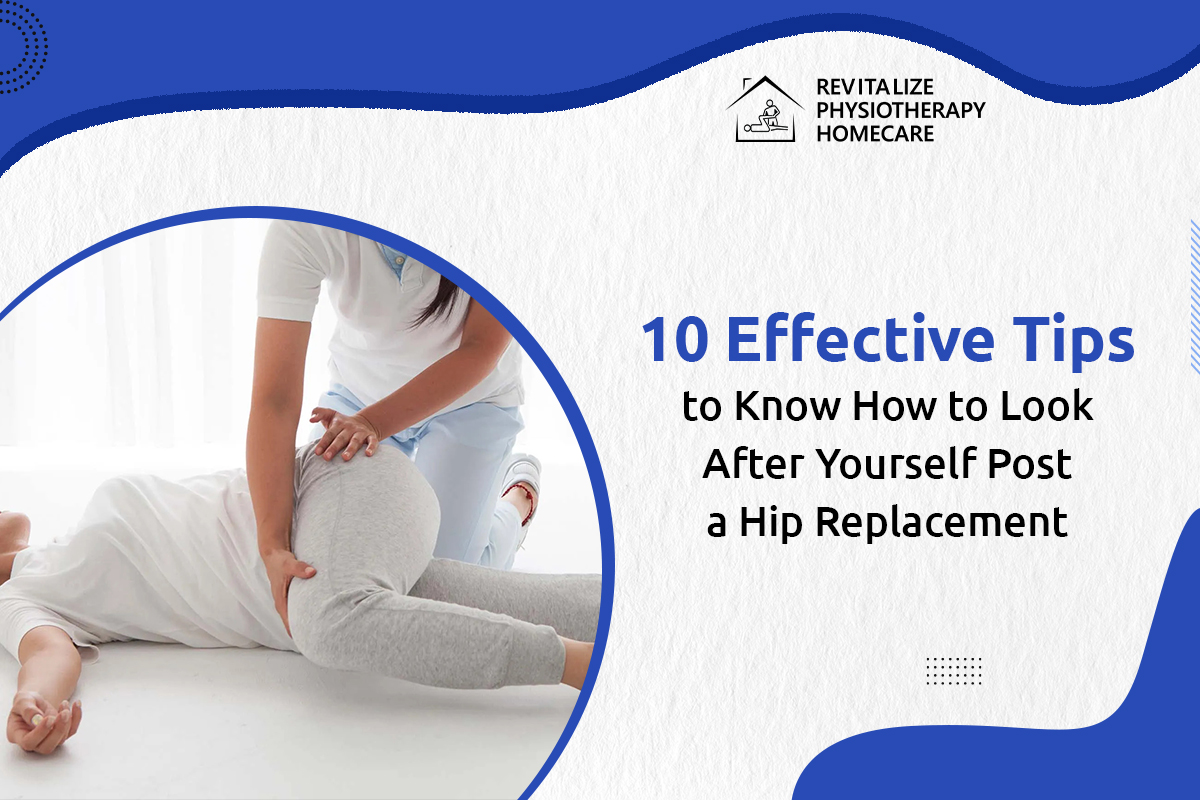10 Effective Tips to Know How to Look After Yourself After a Hip Replacement
Undergoing hip replacement surgery can be a life-changing decision, often leading to improved mobility and less pain. However, the journey to recovery requires careful planning and self-care. Whether you've opted for Hip Replacement Treatment in Brampton or elsewhere, the post-surgery period is crucial for a successful outcome.
The process of healing and regaining strength demands attention to specific details in your daily routine. This blog will guide you through ten essential tips to look after yourself following a hip replacement.
From arranging for a caregiver to streamlining your living space and engaging in hip replacement physio at home, each tip is designed to ensure a safe and effective recovery. Let’s explore these strategies to help you navigate the post-surgery phase with confidence and ease.
10 Tips to Look After Yourself After a Hip Replacement
1. Line Up a Caregiver Before Your Surgery
Arrange for a caregiver before your surgery. Having someone to help you with daily tasks and mobility can be invaluable in the first few weeks of recovery. This caregiver can be a family member, friend, or professional aide. Their assistance can ease the transition back home after surgery, helping with tasks like cooking, cleaning, and ensuring you're comfortable. Having support lined up in advance relieves stress and allows you to focus on healing.
2. Move Your Bed to the Ground Floor
If you live in a multi-story home, consider moving your bed to the ground floor. Navigating stairs immediately after surgery can be challenging and risky. Having your bed on the ground level minimizes the need to climb stairs, reducing the risk of falls and strain on your new hip. This temporary arrangement can be instrumental in making your recovery safer and more comfortable.
3. Stock Up on Things & Equipment You'll Need During Recovery
Prepare your home with the necessary items and equipment before surgery. Stock up on easy-to-prepare meals, toiletries, and other essentials. Arrange for assistive devices like a walker, grip bars, and a shower chair. Having these items readily available will reduce strain and make your daily activities more manageable during recovery. This preparation ensures you have everything you need at arm's reach, minimizing unnecessary movement and discomfort.
4. Maintain Personal Care to Keep Surgical Wound Clean
Keeping your surgical wound clean is paramount. Follow your doctor’s instructions on wound care to prevent infection. This may involve regular cleaning, changing dressings, and monitoring for signs of infection like redness, swelling, or discharge. Personal hygiene is crucial, so plan how you'll bathe without wetting the wound. Staying vigilant about wound care aids in smooth healing and reduces complications.
5. Clear All Walkways
Safety in your home is essential. Clear all walkways of tripping hazards such as loose rugs, electrical cords, or clutter. Ensure your home is well-lit and pathways are free of obstacles. This reduces the risk of falls, helping you navigate your home safely as you regain mobility. A clear and secure environment is key to preventing accidents during your recovery.
6. Arrange for a Pet- and Child-Free Home
If possible, arrange for pets and young children to stay elsewhere for the initial recovery phase. Pets and small children can be unpredictable, increasing the risk of accidental bumps or falls. Ensuring a calm, controlled environment is important for your safety and recovery. You can reintroduce pets and children into your home when you feel more stable and confident in your mobility.
7. Get Hip Replacement Physio at Home
Physiotherapy is crucial for recovery. Engage in hip replacement physio at home or attend scheduled sessions. A physiotherapist will guide you through exercises to strengthen your hip and improve flexibility. This not only aids in faster recovery but also ensures you regain maximum mobility. Adhering to your physiotherapy regimen is key to a successful recovery.
8. Don't Stay Still for Long; Get Moving
While rest is important, so is movement. Avoid sitting or lying in the same position for too long. Gentle movements and regular position changes prevent stiffness and blood clots. Follow your therapist’s advice on safe movements and gradually increase your activity level. Movement encourages blood flow and healing. Hence, make sure you incorporate light activities like walking as recommended.
9. Streamline Your Kitchen
Modify your kitchen for convenience. Place frequently used items at waist level to avoid bending or stretching. If possible, use a stool or chair while cooking to reduce strain on your hip. Preparing meals might be challenging initially, so consider easy-to-make foods or meal delivery services. A well-organized kitchen reduces physical stress and makes meal preparation safer and easier.
10. Prepare the Bathroom
Bathroom safety is crucial. You may require an elevated toilet seat or commode. Place frequently used things in the bathroom on middle shelves or on surfaces at table top height. Think about installing grab bars in the shower, bathtub, or both. Take into account additional crucial locations for grab bars, such as the restroom. (To make sure grab bars are secure, they should be mounted into wall studs.) Cover the floor of the bathtub or shower with a bath mat or adhesive slip strips. Think about a portable shower head. Instead of using hand-held soap in the bathtub or shower, think about utilizing a soap dispenser that holds liquid soap. If not, stuff a bar of soap into a nylon stocking and fasten it to a soap dish.
Conclusion
Recovering from a hip replacement involves more than just medical care. It requires thoughtful preparation and adjustments to your daily life. By implementing these ten tips, you set the stage for a smoother, safer recovery.
Remember, the journey to full mobility post-surgery is gradual and requires patience and diligence. Whether it's through Hip Replacement Treatment at the Clinic or hip replacement physio at home, each step you take is crucial in regaining strength and returning to your normal activities.
Therefore, it is wise to contact Revitalize Physiocare for expert guidance and rehabilitation. We have a team of skilled physiotherapists who have vast experience in hip replacement treatment. Additionally, we offer in-home physiotherapy treatment for convenience and smooth recovery.
To schedule an appointment contact 905-452-0222. Also, you can visit https://revitalizephysiocare.com or send an email to revitalizephysio@gmail.com.




